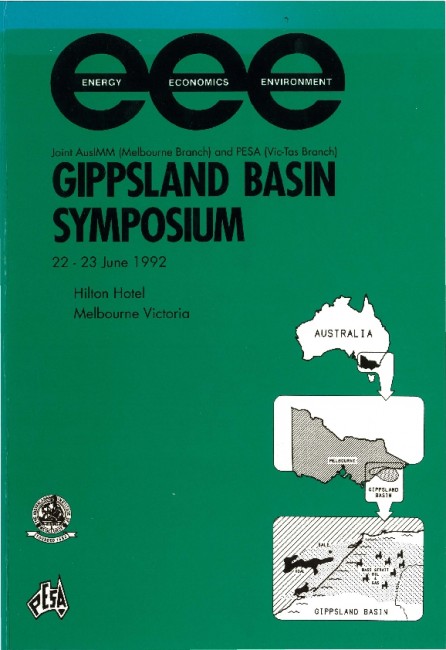Publication Name: Gippsland Basin Symposium, Melbourne, 22 ? 23 June 1992
Authors: J B WILLCOX, J B COLWELL, A E CONSTANTINE
Publication Volume: Melbourne, 22 - 23 June 1992
Date Published: December 1992
Number of Pages: 27
Reference Type: Conference Proceedings
Abstract:
A unique, regional grid of deep (12 - 14 second record length), seismicreflection and refraction data has been recorded by the Australian Bureau
of Mineral Resources (BMR) across the offshore Gippsland Basin and
parts of the adjacent Bass Basin, in southeastern Australia. These data
have been combined with onshore mapping to produce a new model for
the development of the Gippsland and adjacent Bass Strait basins.
Overall, the Gippsland Basin contains up to 12 - 14 km of sediment in
an ESE-trending depocentre bounded on its north and northwestern
margins by a detachment ramp, and on its southern side by a relatively
linear, listric fault system. The basin, together with the adjacent Bass and
Otway Basins, appears to have formed as part of a linked, largelystrike-
slip to 'transtensional' system, which started to extend through Bass
Strait, probably during the latest Jurassic. Each of the basins developed
by movement on a common detachment or detachment complex, which
produced headwall extension at their western ends, in the areas now
occupied by the Strzelecki Ranges, Otway Ranges - Torquay Sub-basin,
and Robe Trough. Adjustments and reactivation from the mid Cretaceous
of several postulated microplates in the region, largely in response to
Tasman Basin rifting, gave rise to the wrench-related and compressional
structures which form the major petroleum targets in the Gippsland Basin.
However, the same process formed largely extensional stuctures in the
Bass Basin.
Our interpretation of the tectonic history of the Gippsland Basin leads
us to the conclusion that there may have been several phases of petroleum
generation and migration, and that potential petroleum traps appear to
exist in the deeper section, in structures sometimes not reflected at the top
or near-top Latrobe Group levels.


